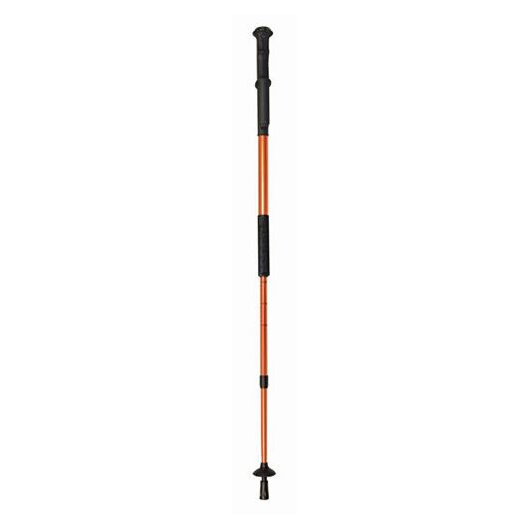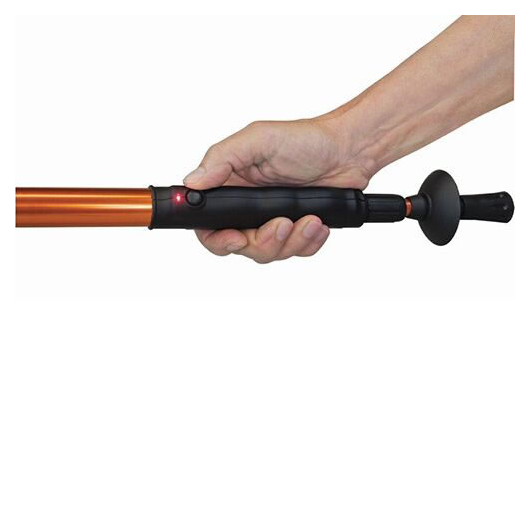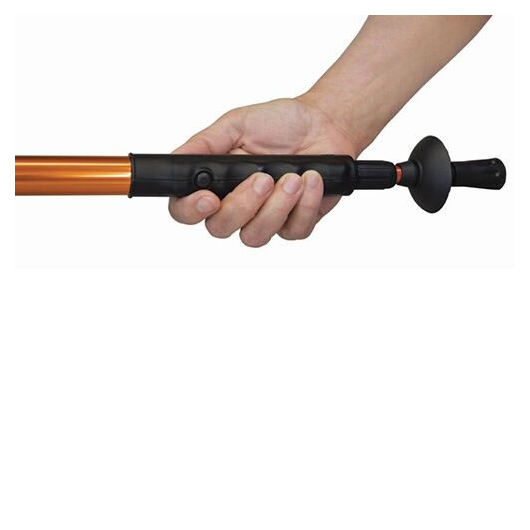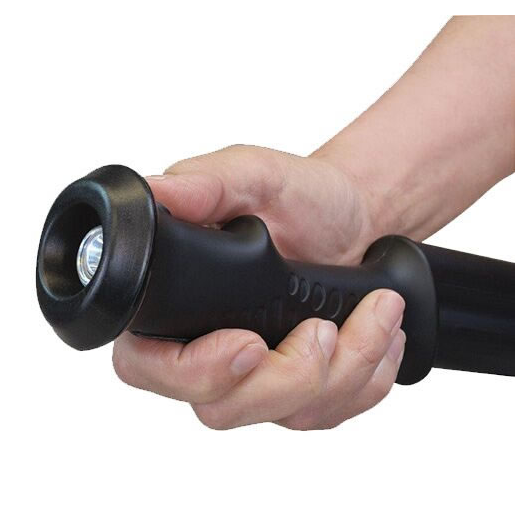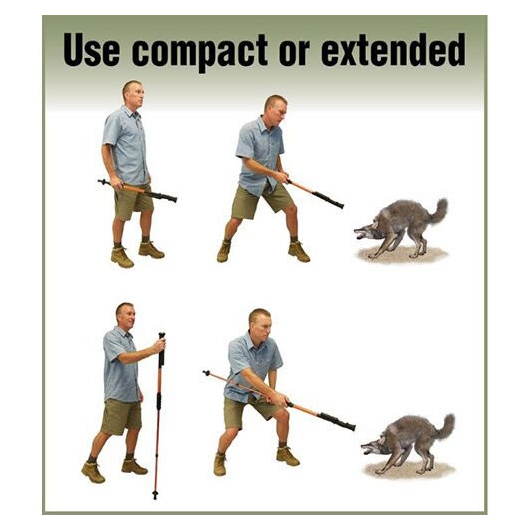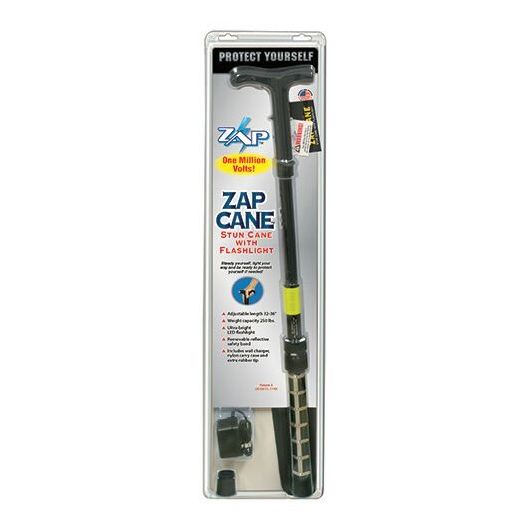Stun Gun Walking Stick
The ZAP™ Hike 'n Strike™ is a multi-talented hiking staff that features a 950,000-volt stun device with spiked electrodes, so you'll never forget to bring safety accessories on your adventure. And if you start losing sun, don't fret-- there's also a flashlight built right in.
Stun Gun Walking Hiking Stick
A texturized rubber grip provides solid support while you trek your way through the wilderness. For added security, there's a removable reflective band on the staff. With the stun walking stick, not only will you see and be seen, but you'll also feel good knowing you can hike worry-free with your new, all-inclusive hiking staff.
The Hiking Staff Stun Gun
Features:
- Expandable hiking staff - a must-have for wilderness lovers everywhere
- Great for camping, hiking, or everyday walking
- 950,000 stun device incorporated into the handle for built-in security or 4.6 milliamps
- Features ZAP™ patented EXTREME Spike Electrodes for added safety
- Includes flashlight with removable cap for covering stun device when not in use
- Rubber non-slip handle for secure grip
- Removable reflective band for greater visibility
- Weight: 18 oz. with batteries
Includes
- Three (3) lithium CR123A batteries
- Wrist strap
- Extra end cap
- Removable reflective band
- ZAP™ exclusive EXTREME Spike Electrodes Patent # USD 680, 188S
- 2-year warranty
Best Weapon for Hiking
When you're out hiking, it's important to have tools that offer both safety and convenience. The Stun Walking Stick is an excellent choice for those looking to enhance their outdoor experience. Not only does it function as a reliable walking aid, but its powerful stun feature ensures you're equipped to handle unexpected threats from wildlife or potential assailants. Lightweight and easy to carry, this versatile tool provides peace of mind while blending seamlessly into your hiking gear, making it the perfect self-defense companion on the trails.
Also available here at TBOTECH is the Taser Cane.
No reviews found

